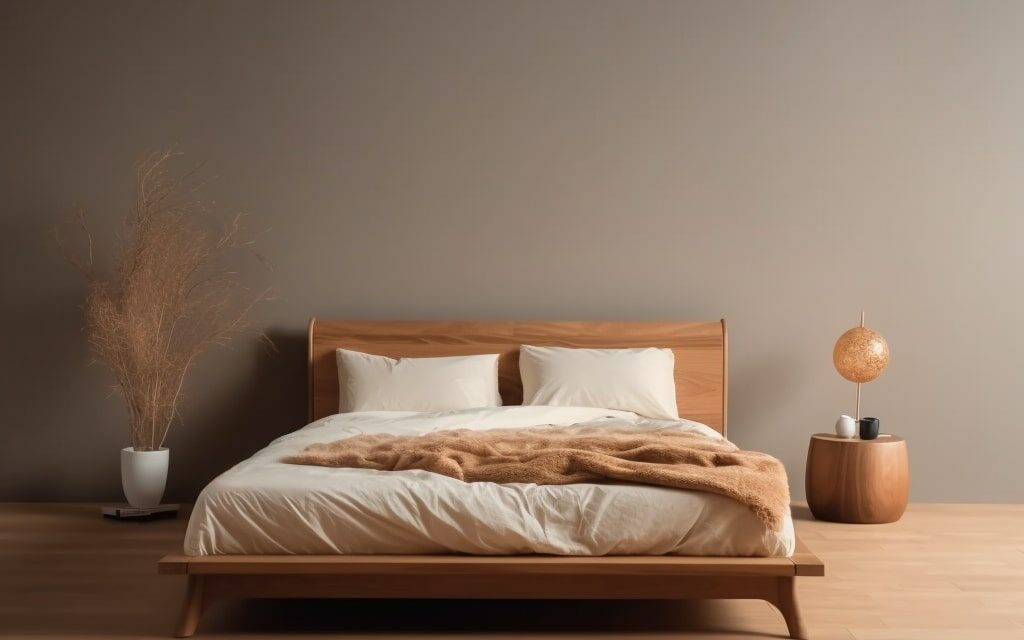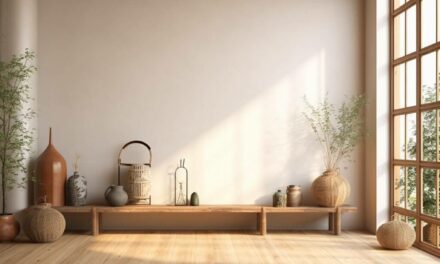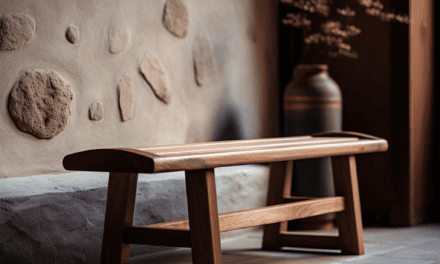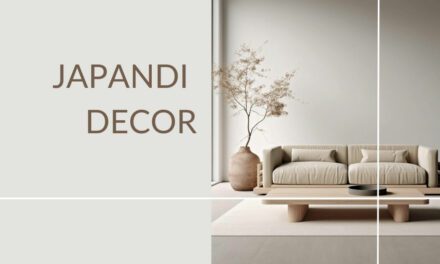In my quest to create a serene and functional space at home, I came across the Japandi style, a design trend that beautifully blends Japanese and Scandinavian aesthetics. To define Japandi, think of it as a perfect fusion of the wabi-sabi philosophy from Japan that embraces imperfection, and the hygge-centric comfort of Scandinavia, which prioritizes coziness.
It creates an ambiance of minimalism and simplicity, while maintaining a warm, lived-in feel.
Importantly, Japandi on a budget is very achievable, proving that a sophisticated style doesn’t have to break the bank. And that’s the journey I’d like to share with you in this blog post.
In my own experience, adopting the Japandi style has been transformational. It transcends being just a design aesthetic; it’s a lifestyle that brings mindfulness, functionality, and calm to my living space.
It encourages decluttering and focusing on items that are not only beautiful but also functional, promoting a peaceful environment.
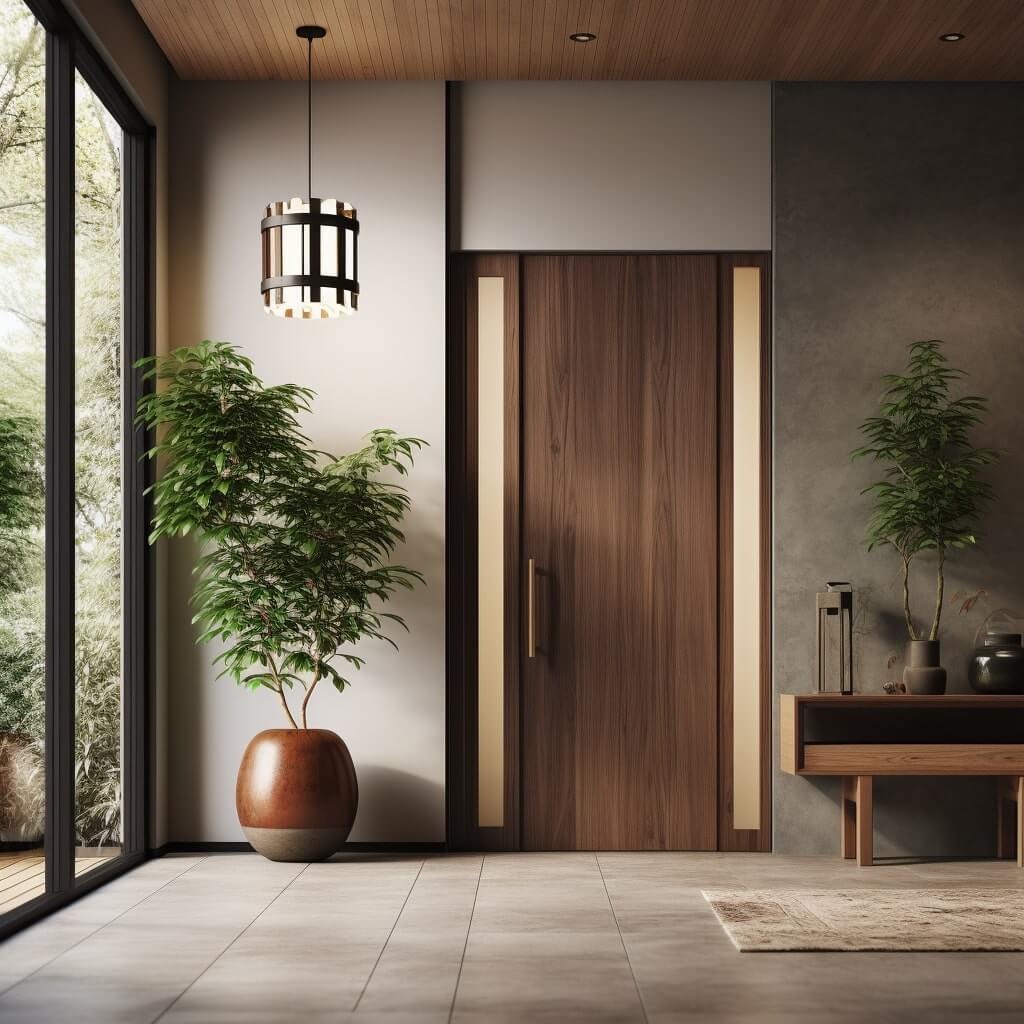
Japandi stye on a budget
Neutral Color Palettes
When I started my Japandi journey, the color palette was one of the first things I had to consider. In line with the minimalist aesthetic, Japandi embraces neutral color schemes.
Soft shades of grey, beige, and off-white, paired with deeper tones like black or navy blue, create a sense of calm and balance.
They provide the perfect backdrop for accent pieces without overwhelming the senses.
I found that painting the walls or using neutral-colored accessories was an affordable way to bring the Japandi look into my home.
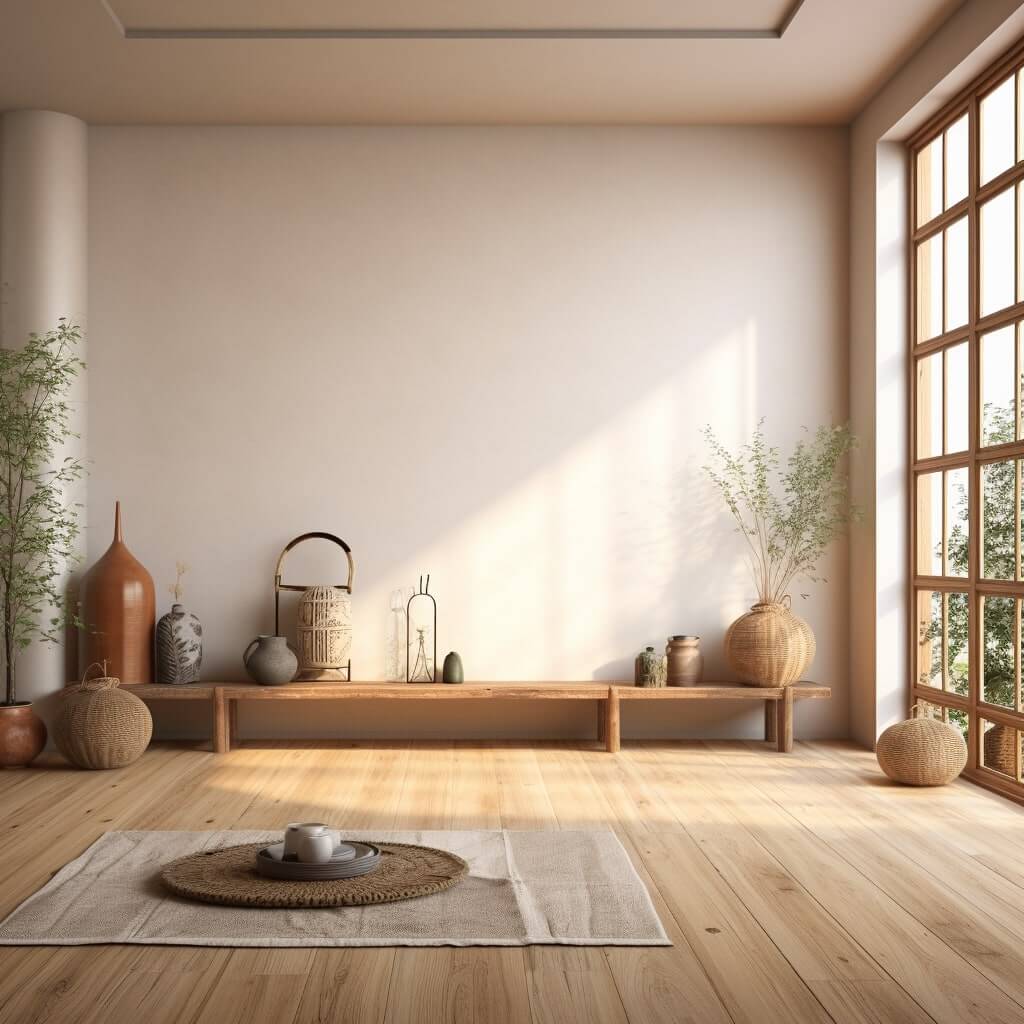
Economical Material Choices
Next came the choice of materials. My aim was to evoke a sense of harmony and connection with nature, a core principle of the Japandi style, but on a budget.
I discovered that locally sourced, economical materials like bamboo, pine, and rattan could do just that.
These materials gave a sense of simplicity and elegance to my space, without costing a fortune.
Incorporating Natural Elements
Incorporating natural elements was another easy and cost-effective strategy.
From potted plants to found items like rocks and branches, I used these pieces to give an organic touch to my space.
Not only did they serve as beautiful, budget-friendly decor, they also fostered a sense of tranquility, a testament to the beauty and serenity of the Japandi style.
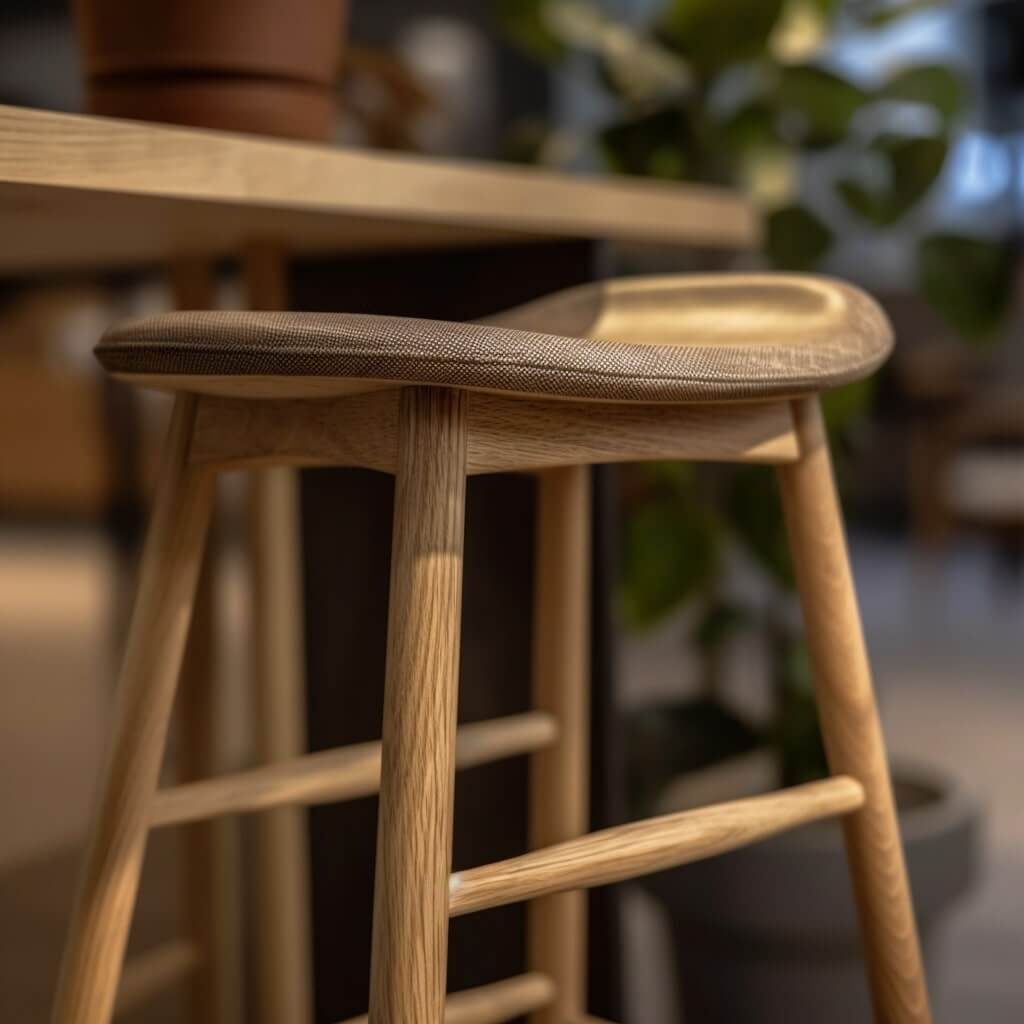
Affordable Japandi Furniture Ideas
Where to Find Budget Japandi Furniture
Furniture is a defining element of any home’s interior design, and the Japandi style is no exception.
But, given that I was aiming for a budget-friendly transformation, I had to get creative when it came to sourcing Japandi-style furniture.
Firstly, it’s important to note that the key principle in Japandi design is minimalism, and this extends to the number of furniture pieces in your home.
Quality over quantity is the mantra here.
When on the lookout for affordable Japandi furniture, second-hand stores and online marketplaces became my best friends.
Stores like IKEA, known for their Scandinavian designs, also proved to be a treasure trove.
Sales and discounts on items with clean lines, functionality, and neutral tones were what I kept an eye out for.
I was even lucky to score a few items from yard sales or listed on neighborhood forums, where people often give away items they no longer need.
With some time and patience, you’d be amazed at the pieces you can find.
Remember, it’s not about matching sets but about pieces that resonate with the Japandi aesthetic.
With a little creativity, you can curate a collection of furniture that tells a story of simplicity and function, without stretching your budget.
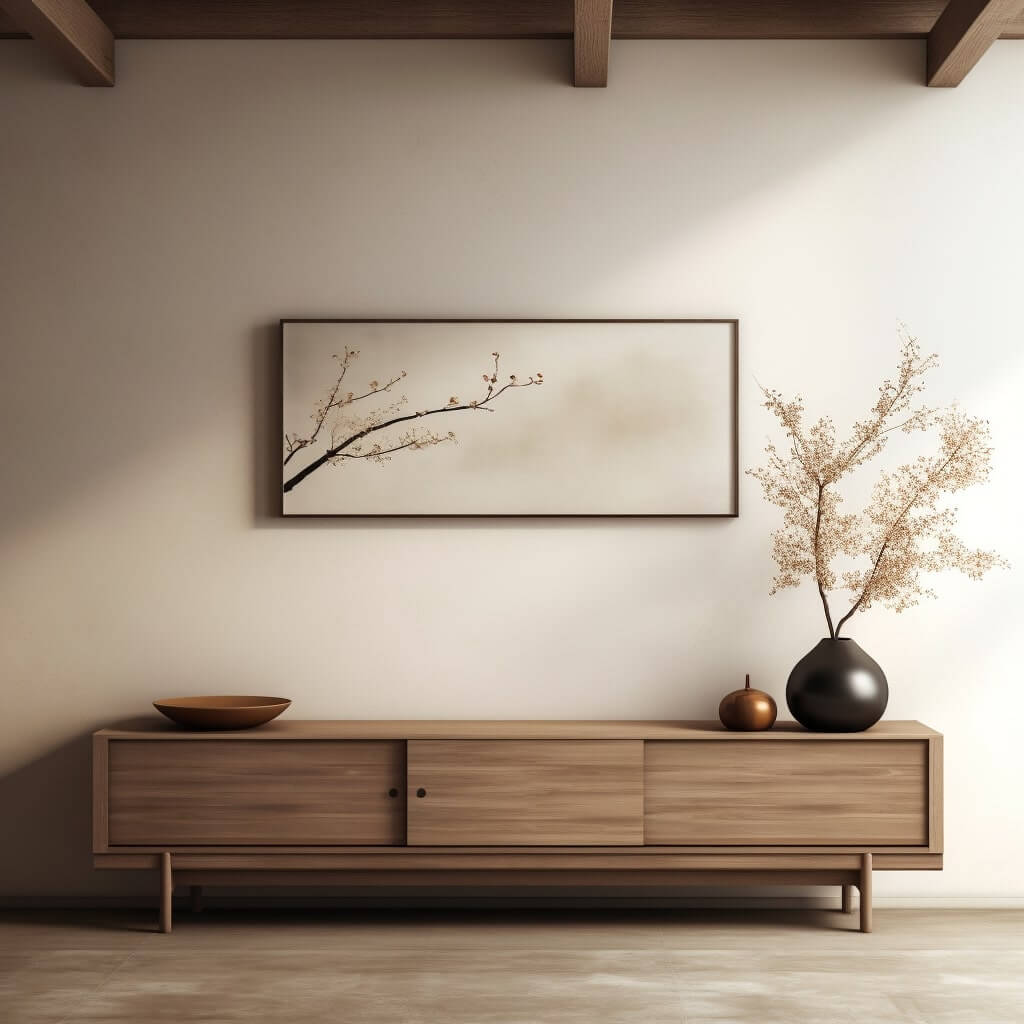
DIY Japandi Furniture Projects
If you’re someone like me who enjoys a good hands-on project, this is where the fun really begins.
I embarked on some DIY projects, crafting minimalist shelving from inexpensive, untreated wood, and creating coffee tables from thrifted pieces and a lick of paint.
There are a myriad of tutorials and guides online to help you with this process.
Don’t be afraid to take on a project; not only is it cost-effective, but it also adds a personalized touch to your space.
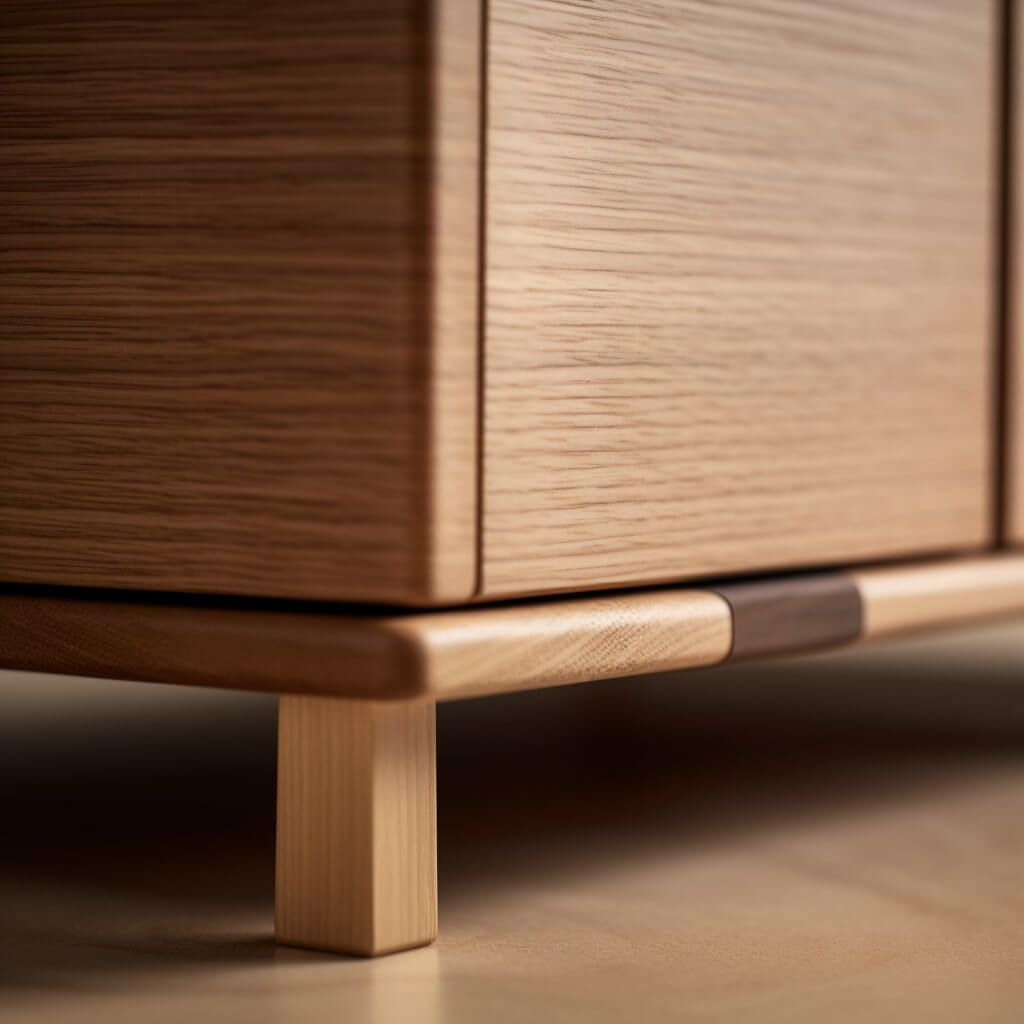
Upcycling Furniture for a Japandi Look
Upcycling is all about breathing new life into old or unwanted items, and it was incredibly satisfying to transform a drab, disregarded piece into something that could take pride of place in my Japandi-inspired home.
For instance, an old, worn-out cabinet was revamped with a fresh coat of neutral paint and some new handles, resulting in a beautiful and functional piece that perfectly fit the Japandi aesthetic.
To create a Japandi look, your furniture doesn’t have to be expensive.
With a bit of imagination, a willingness to hunt for second-hand bargains or work on some DIY projects, and an eye for upcycling, you can fill your home with pieces that are not only affordable, but also speak to the principles of the Japandi style – simplicity, functionality, and a connection to nature.
Budget-friendly Solutions for Small Japandi Spaces
Living in a small space doesn’t mean you can’t achieve the Japandi style.
In fact, the design principles of Japandi lend themselves beautifully to small spaces. It’s all about smart space utilization and the careful selection of items.
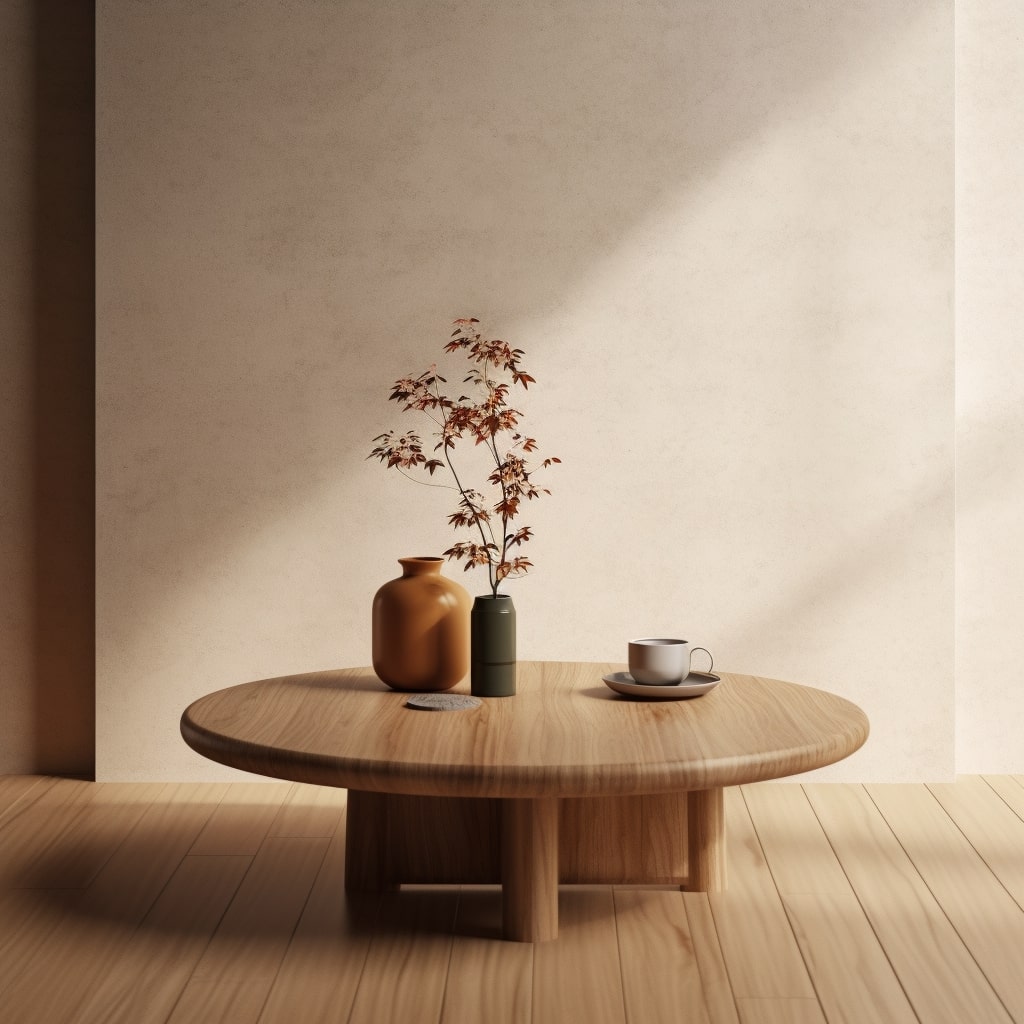
Storage Solutions and Organization Tips
Each piece of furniture I chose served a purpose, avoiding clutter and maintaining a sense of openness.
For example, a Japandi-style bench at the dining table could also serve as a coffee table in the living area when required.
A key part of this was storage solutions. Low-cost storage options like baskets, boxes or even a wooden crate were great for maintaining order and hiding away items that weren’t in use.
Maximizing Space with Room Combinations
Lastly, I embraced the concept of room combinations, which is ideal for small homes.
My living area also functions as a dining space, separated visually by the arrangement of furniture and a rug.
This maximizes the functionality of the space without the need for additional pieces.
Even in small spaces, a Japandi design can be achieved with thoughtful planning and clever, cost-effective solutions.
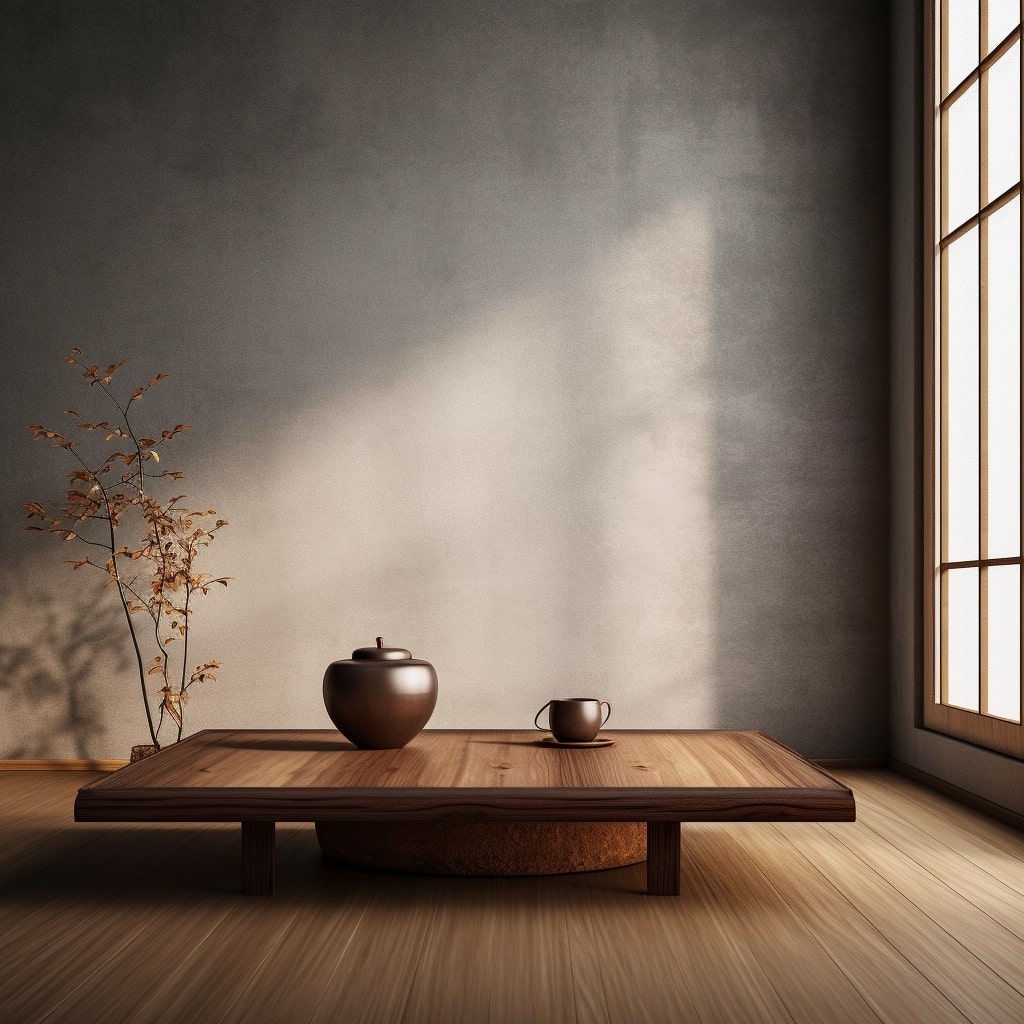
Budget Japandi Lighting Ideas
Importance of Natural Light
A cornerstone of Japandi design is its focus on natural light – and it’s free!
My space was transformed when I embraced this principle.
By pulling back heavy curtains, decluttering windowsills, and placing mirrors strategically, I was able to maximize the natural light flooding into my home, creating a sense of openness and calm.
Affordable Lighting Fixtures and Techniques
It’s not always possible to rely on natural light alone, particularly in the evening. I found that lighting fixtures play a key role in achieving the Japandi look.
Opting for affordable lighting solutions that mimic natural light was crucial.
Simple, clean-lined lamps or pendant lights with warm bulbs provide a soft, diffused light that enhances the calming ambiance.
Even with a limited budget, you can play around with light and shadows to create a serene, Japandi-style atmosphere.
Remember, lighting should be subtle and functional, emphasizing the minimalist and nature-centered approach of the Japandi design.
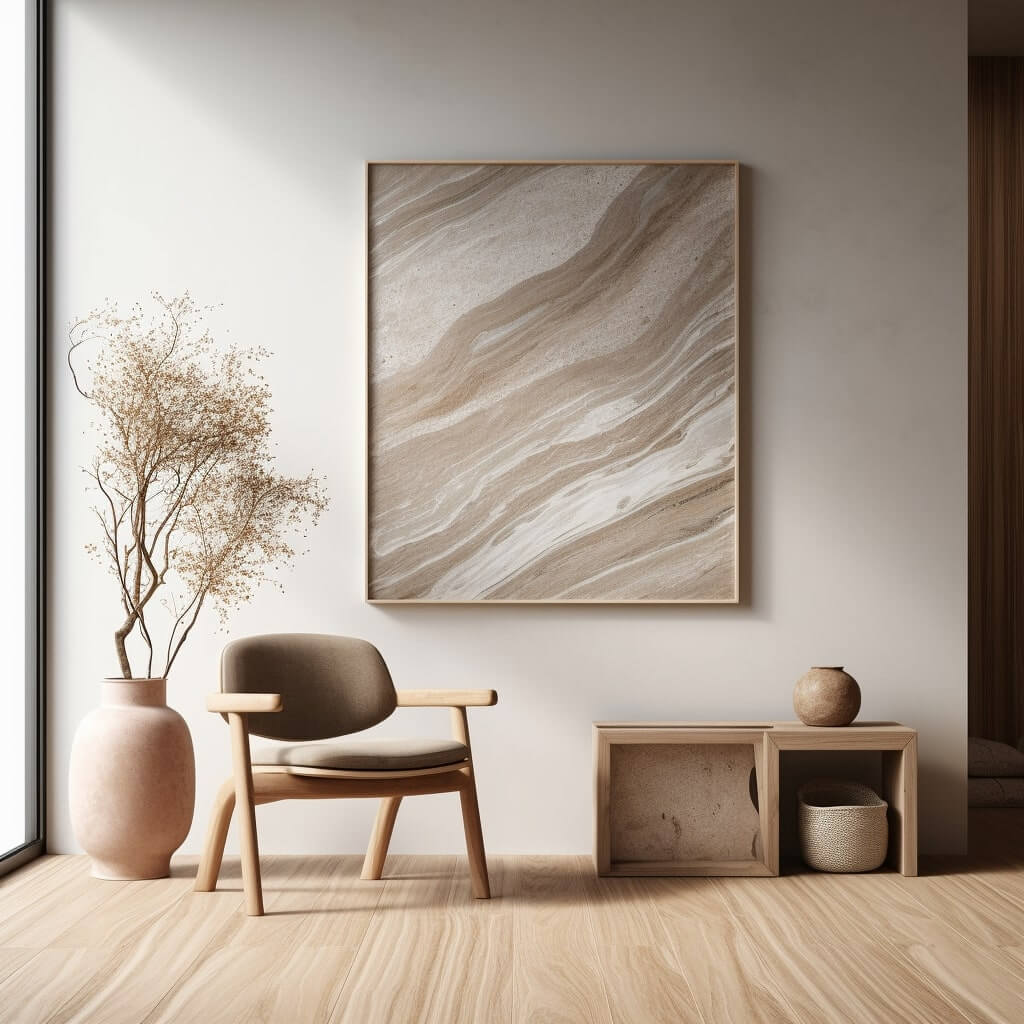
Japandi budget Room-by-Room Guide
Creating a Japandi home doesn’t have to be a daunting or expensive task. You can approach it room by room, slowly transforming your space while keeping costs in check.
Let’s walk through how I achieved this in my own home.
Creating a Japandi Living Room on a Budget
The living room was my starting point.
I used a neutral color palette of off-whites and soft greys, creating a calming and inviting space.
I incorporated a mix of second-hand wooden furniture, like a coffee table and a low-slung bench, each echoing the principles of Japandi design – functional, simple, and with a hint of nature.
By opting for minimalist decor like a single potted plant and some soft, cozy textiles, I was able to keep the space clean and inviting without exceeding my budget.
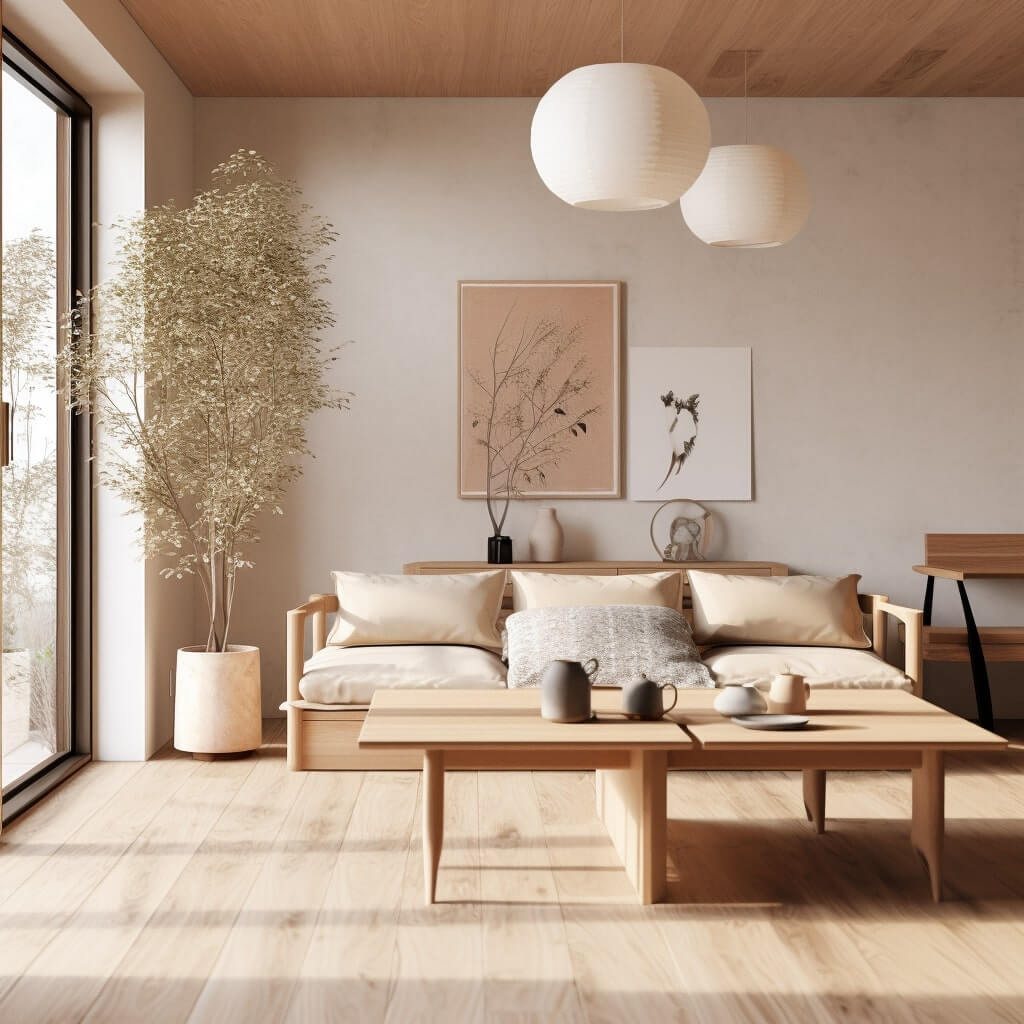
Designing a Budget Japandi Bedroom
For the bedroom, I focused on creating a tranquil and restful space.
This was achieved by paring down unnecessary items, leaving only essential furniture like the bed and a dresser.
Again, second-hand stores and upcycling were lifesavers. An old wooden crate, for instance, was repurposed into a bedside table.
Linens in earthy tones added warmth and coziness. Lighting was crucial here too.
A budget-friendly wall sconce with a warm bulb provided the perfect soft lighting for the bedroom.
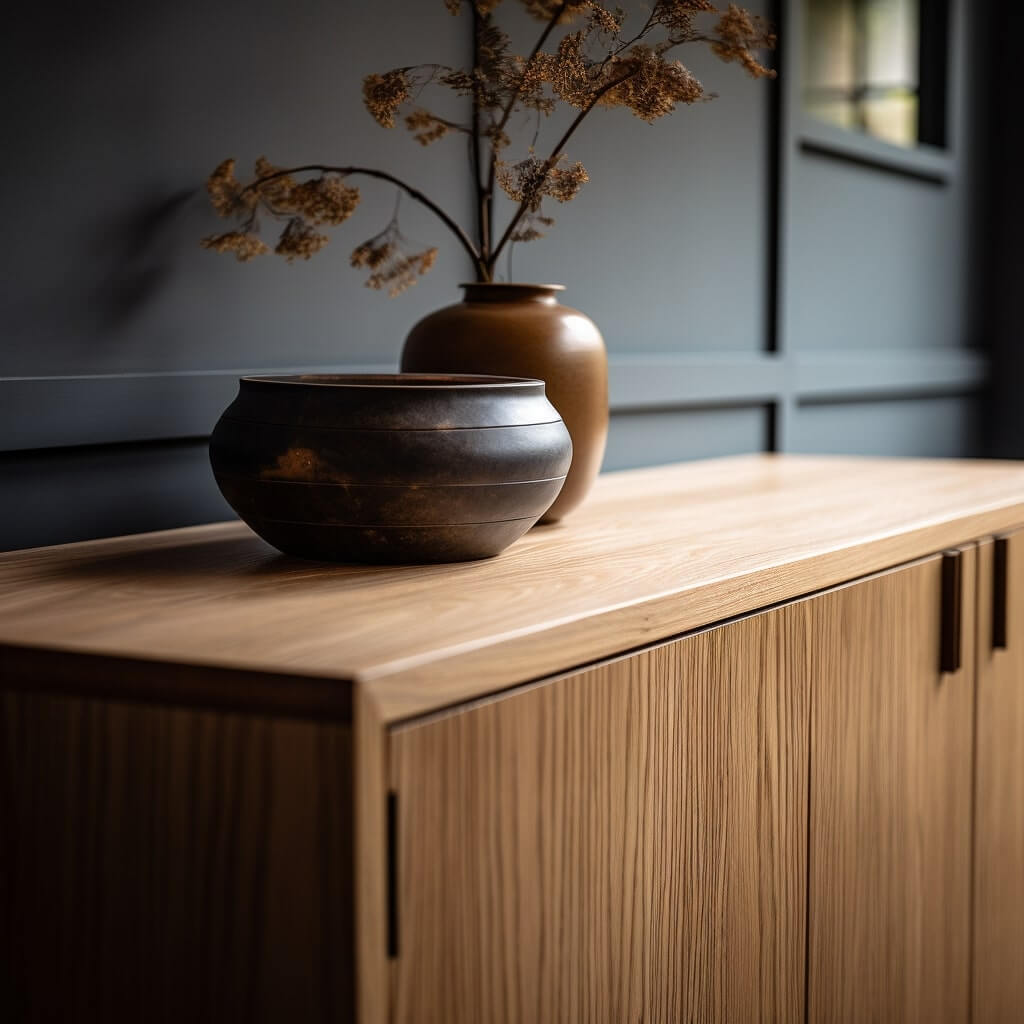
Japandi Kitchen on a Shoestring Budget
Moving onto the kitchen, the goal was to maintain functionality without sacrificing aesthetics.
I stuck with a clean and uncluttered look. Budget-friendly open shelving crafted from inexpensive wood served both a practical and decorative purpose.
Rather than hiding away all kitchenware, I selected some aesthetically pleasing items, such as wooden utensils or ceramic bowls, and displayed them on the shelves.
The blend of practicality and visual appeal resulted in a kitchen that was functional, beautiful, and quintessentially Japandi on a budget.
Crafting a Japandi Bathroom on a Budget
Lastly, the bathroom. A simple, clean look was key here. Economical choices like a bamboo bath mat or a minimalist shower curtain made a significant difference.
Plants like a small snake plant or aloe vera were perfect for adding a touch of nature.
Storage was solved with a budget-friendly, simple wooden shelf, keeping items organized and maintaining the sense of tranquility associated with the Japandi style.
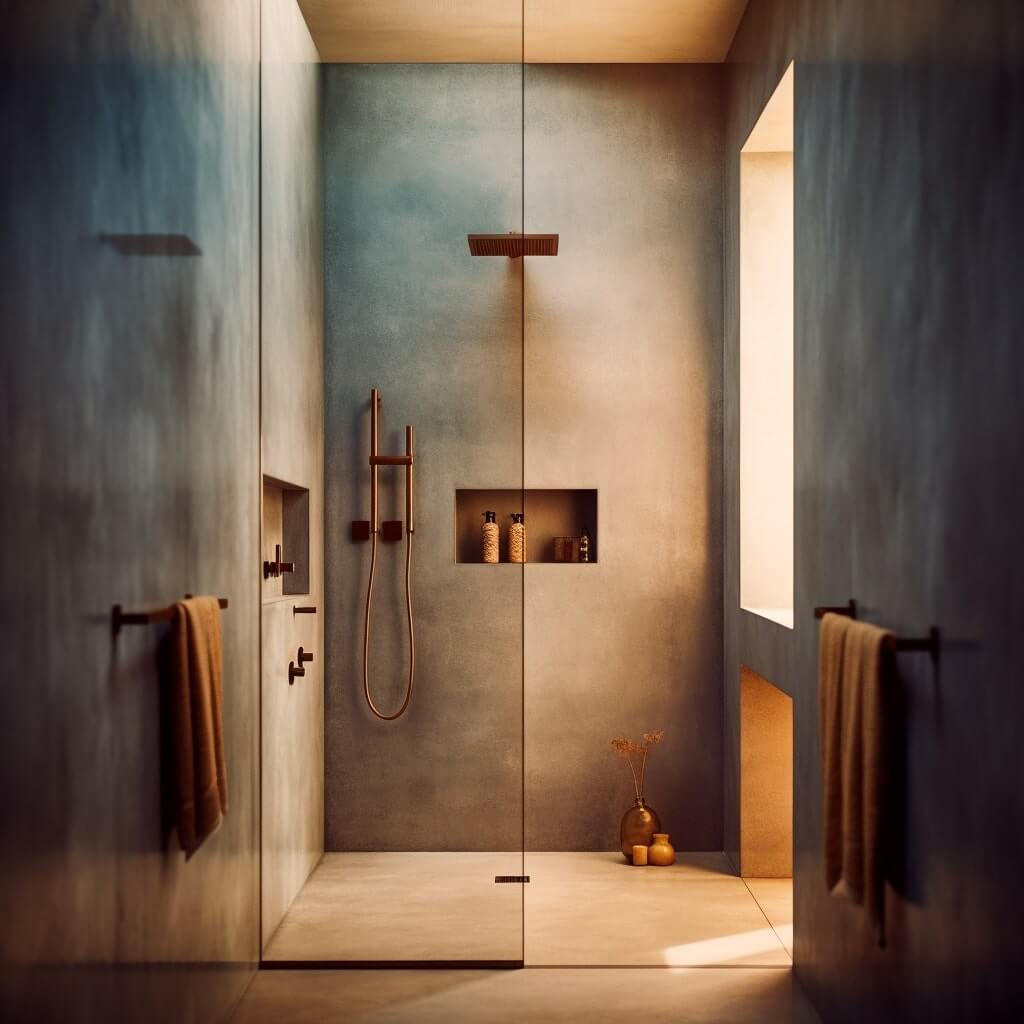
Upcycling Items for a Japandi Look
In my journey to emulate Japandi on a budget, I discovered the power of upcycling.
Giving new life to previously loved items not only saved money but also added a unique, personal touch to my space.
From transforming a discarded wooden crate into a stylish coffee table to reupholstering a worn-out chair with simple, neutral-toned fabric, each upcycling project brought me one step closer to my dream Japandi home.
An old ladder found at a yard sale, for example, was repurposed into a rustic towel rack in the bathroom.
A beat-up chest of drawers was sanded down and painted in soft grey, turning it into a chic and functional piece for my bedroom.
Upcycling allowed me to create pieces that perfectly fit the Japandi aesthetic of simplicity, functionality, and a touch of nature.
Plus, there’s a certain satisfaction in transforming an old, worn-out item into a piece of decor that brings you joy every day.
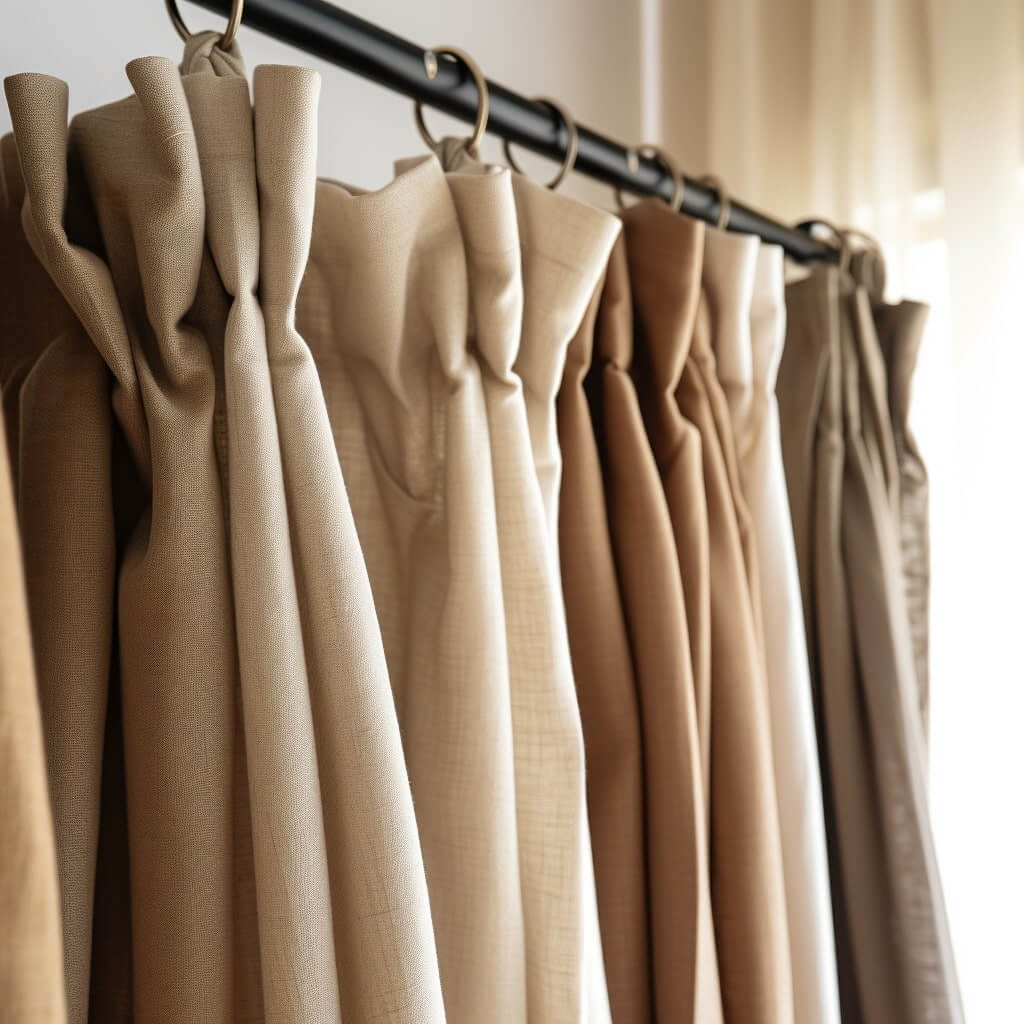
DIY Projects to for Japandi on a Budget
DIY furniture projects were another fantastic way to bring the Japandi style to my home while keeping costs low.
With a little bit of creativity and effort, I managed to undertake a few projects that significantly elevated my space.
For instance, a DIY project that had a huge impact was creating a minimalist wall art.
Using a blank canvas, some neutral paints, and a bit of creativity, I was able to create a piece of art that added a hint of color and personality to my living room.
It was not only affordable but also tailored exactly to my taste and the Japandi style.
Another fun and budget-friendly project was making my own linen curtains.
With some basic sewing skills and affordable linen fabric in an earthy tone, I added warmth and a soft, diffused light to my living room.
Through upcycling and DIY projects, you can significantly transform your space to achieve Japandi on a budget.
Not only do you get to have decor and furniture that are unique and personalized, but you also have the joy and satisfaction of creating them yourself.
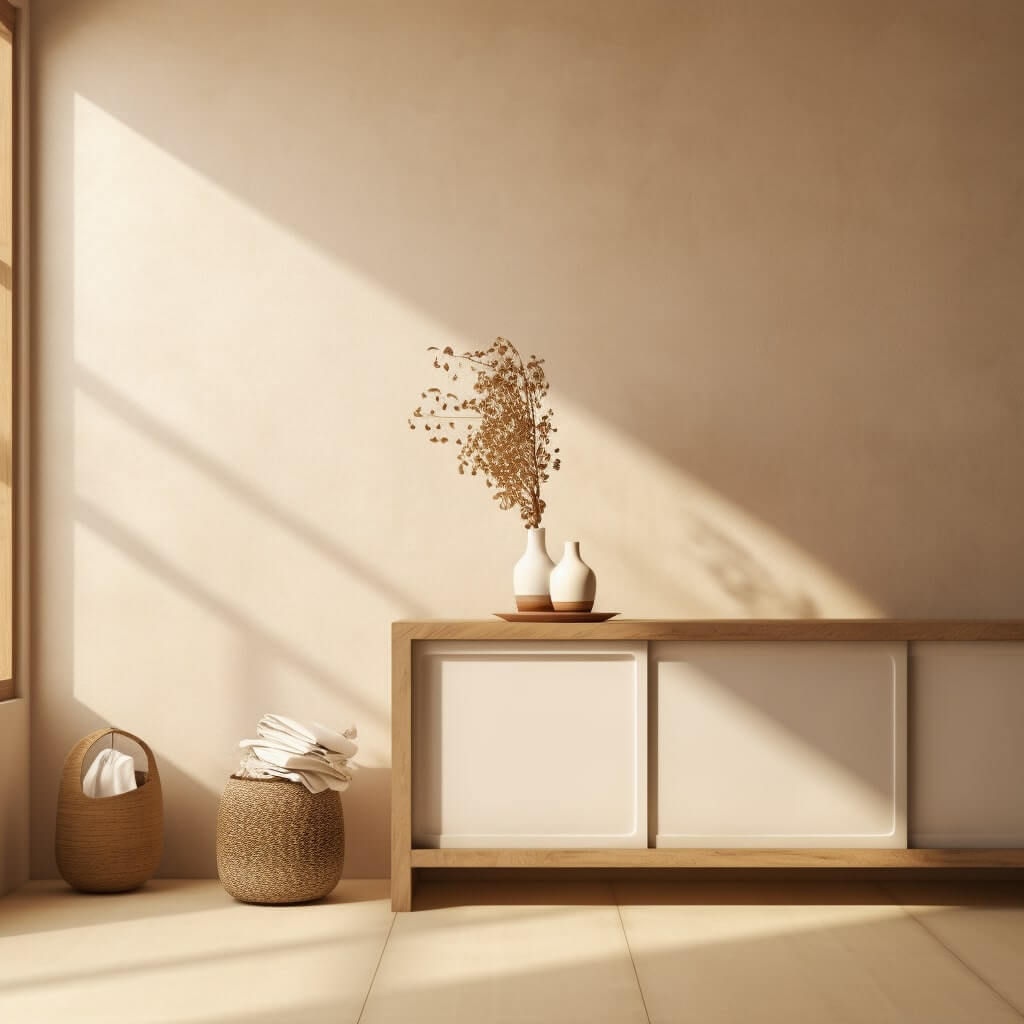
Incorporating Minimalist Art and Decor
One of the key aspects of the Japandi style that I fell in love with was its focus on minimalism.
I discovered that incorporating minimalist art and decor into my home was an affordable way to achieve this aesthetic.
Simple line art or abstract prints from local artists, or even DIY artwork, as I mentioned before, brought a sophisticated touch to my walls.
Subtle decor like a single vase with a sprig of eucalyptus, a couple of coffee table books, or a minimalist clock became focal points of my living room.
Using Thrift Store Finds for Japandi Decor
Thrift stores proved to be a treasure trove of Japandi decor. With a keen eye, I found items like ceramic vases, woven baskets, and vintage wooden bowls that echoed the Japandi aesthetic.
Note: Japandi style also works very well in combination with a retro look. I.e., Retro Japandi. Perfect for upcycling vintage pieces.
I learned that thrift store shopping is a game of patience and vision – not every visit yielded results, but the ones that did were rewarding.
The key was to look for items that had simple lines, natural materials, and a sense of functionality.
It wasn’t about brand names or matched sets, but about individual pieces that resonated with the simplicity, functionality, and connection to nature that lies at the heart of the Japandi style.
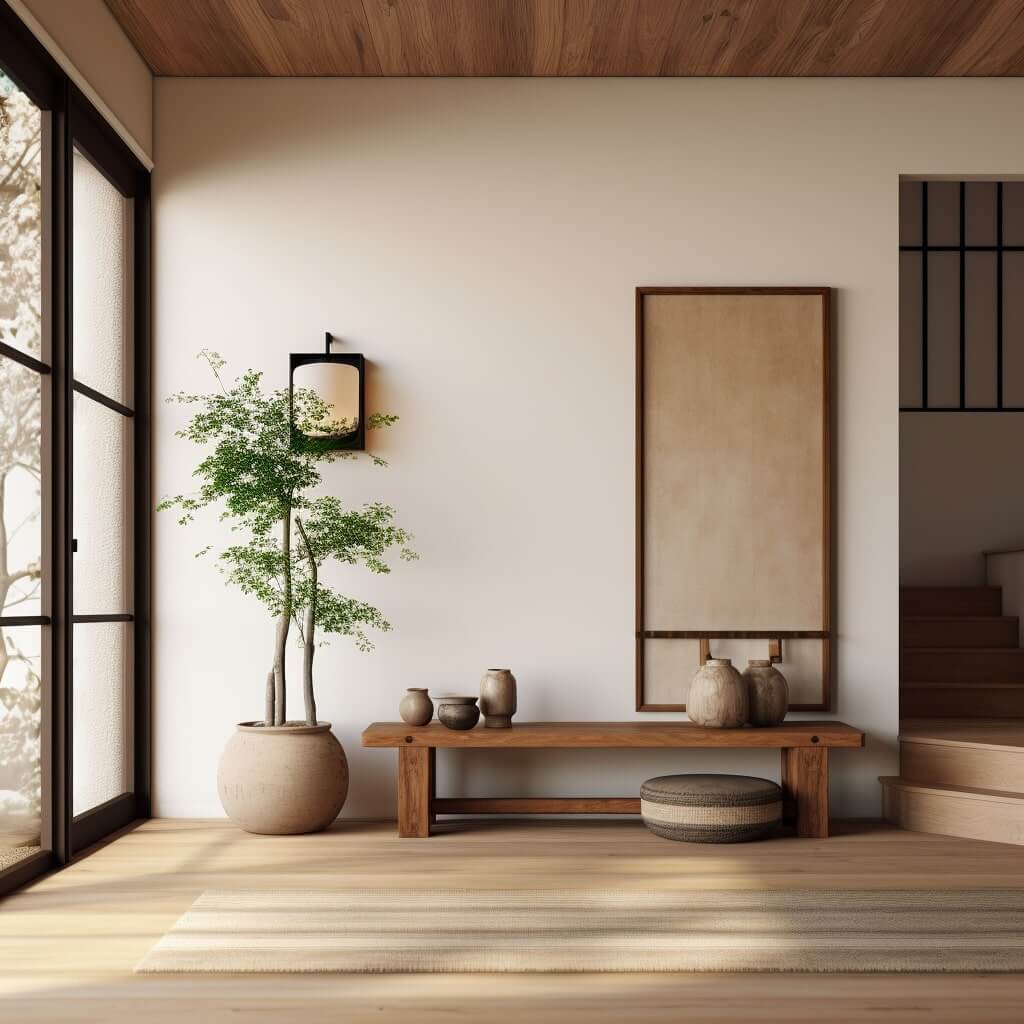
What is a reasonable budget for interior design?
A reasonable budget for interior design can vary greatly depending on the size of the project, but generally, it’s wise to allocate 10%-20% of the home’s value.
What is the 70 30 rule in interior design?
The 70-30 rule in interior design suggests that 70% of the room should be in a dominant color, 30% in a secondary color, creating a balanced and visually appealing space.
How do I redecorate my Japandi house on a budget?
Redecorate on a budget by repurposing existing items, painting walls for a fresh look, shopping at thrift stores or flea markets, and DIYing decor or furniture pieces.
How much does it cost to estimate interior design?
Interior design estimates can range from free consultations to hundreds of dollars, depending on the designer’s experience, the project’s scope, and the region.
How much does it cost to furnish a house?
The cost to furnish a house varies greatly, but on average, expect to spend 10%-20% of the home’s purchase price.
How often should you redecorate a room?
Typically, rooms can be redecorated every 5-10 years, but this can depend on wear and tear, changing trends, or personal preference.







